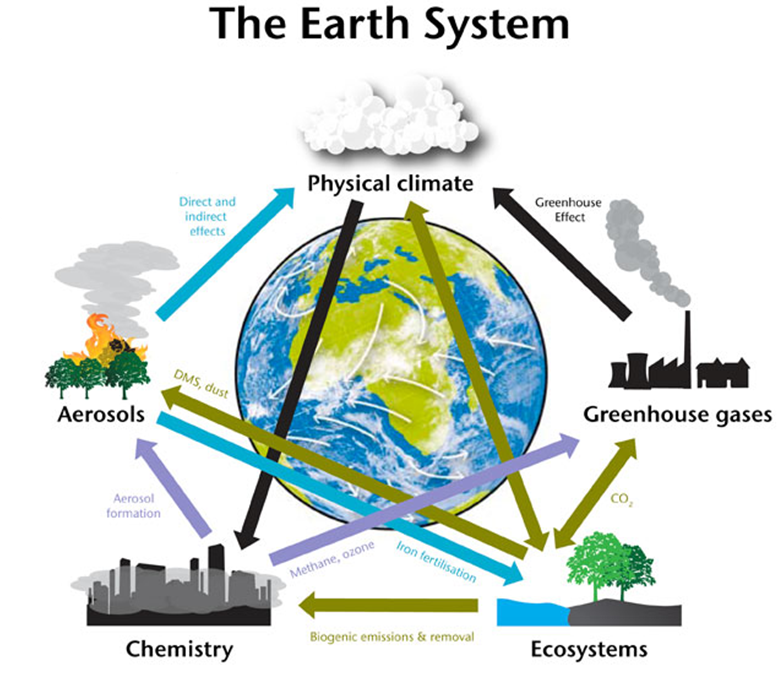 At a glance / Definitions / Definitions - Earth-System Modeling / Earth-System Modeling / Earth-System Modeling - At a glance / News Home Page
At a glance / Definitions / Definitions - Earth-System Modeling / Earth-System Modeling / Earth-System Modeling - At a glance / News Home Page
Earth system models are key tools to understanding climate change and its effects on society and are at the basis of the International Panel on Climate Change (IPCC) assessment on future climate and EU policy on climate change.
Society requires accurate estimates of the future state of the full Earth system and the way it responds to forcing, in order to develop mitigation and adaptation strategies to address potential future environmental change. Such requirements can only be met through the application of Earth System Models. ESMs capture different types of emissions, variations of land surface albedo (fraction of solar radiation reflected) due to both natural vegetation changes and to man-made changes such as agriculture and forestry, and aerosol chemistry. The inclusion of these components in ESMs represented a major step forward in simulating the Earth system in a comprehensive and consistent way. ESMs include processes, impacts and feedbacks, meaning that the impact of human decision making with respect to emission pathways and land use can be simulated.
Since ESMs can simulate how the different Earth system components change over time interactively in response to anthropogenic activity and changing climate conditions, they can be used to:
Provide the scientific bases for:
- Mitigation strategies
- Adaptive management
- Sustainable development strategies
Help to answer questions about the future such as:
- Is it still attainable to hold global warming below two degrees?
- What happens if we overshoot the two degree target for limiting global warming?
- What emission reductions would be required to achieve a given climate target to avoid dangerous climate change?
- What climate change might look under unregulated emissions of CO2?
- Is it possible to reverse global warming?
